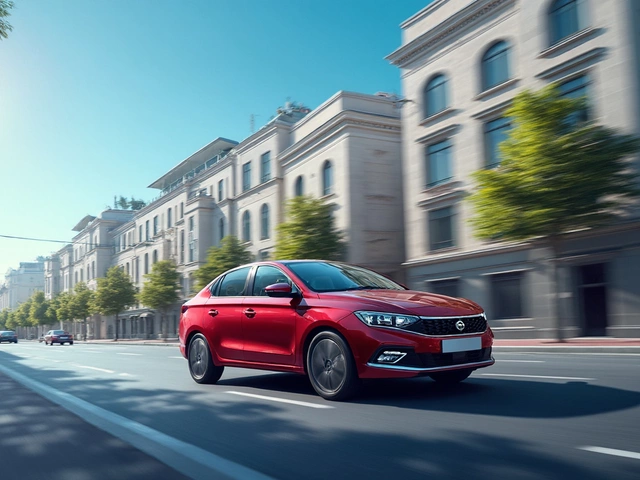Ever wondered why some cars never make it to the U.S. streets? If you've got your eyes set on a flashy foreign automobile, you've probably stumbled upon the perplexing laws that make importing some of these cars illegal. At the heart of this is America’s stringent safety and environmental standards. These rules are there to make sure the cars on the roads are safe for drivers and the environment.
Here's the deal. U.S. regulations require imported cars to meet specific criteria, which are often different from those in other countries. Many import cars, especially unique models from places like India, just don't meet these criteria right off the bat. This doesn't just affect the average driver; it impacts car enthusiasts and collectors who want to ship these vehicles over.
- Understanding Import Restrictions
- Safety and Environmental Standards
- Historical Background of Car Import Laws
- Exceptions and Loopholes
- Impact on Indian Automobiles
Understanding Import Restrictions
Let's break down why certain import cars can't legally make their way onto American roads. It's not just about the cost or complexity of shipping. Instead, it's all about the regulations set by the U.S. government, primarily revolving around safety, emissions, and the protection of local industries.
Safety Standards
The National Highway Traffic Safety Administration (NHTSA) plays a huge role here. Every car in the U.S. must comply with specific crash safety standards. Most foreign cars, including some from India, aren't manufactured to meet these exact requirements because they have different safety standards back home. This isn't just about seat belts and airbags but also involves rigorous crash tests.
Environmental Factors
The Environmental Protection Agency (EPA) has its own set of rules focused on emission standards. Cars must meet tailpipe emissions standards that curb pollution to protect the air we breathe. If a foreign car's emissions don't match these standards, it's a no-go in America. For older models, this is a frequent issue because they often lack the tech needed to pass emissions tests.
Age and Import Rules
Here's an interesting twist: cars that are over 25 years old are typically exempt from these regulations under what's known as the '25-year rule.' If you're eyeing a vintage Indian automobile, it might just slide through these restrictions. This rule was primarily designed for classic car aficionados but works as a loophole for regular folks and car enthusiasts alike.
Protecting Domestic Industry
There's also an economic angle. Import restrictions help protect the American automobile industry. By making it tough for foreign cars to enter, it supports local car manufacturers and reduces competition. This gives American brands a better shot at market dominance.
| Key Agency | Main Responsibility |
|---|---|
| NHTSA | Safety standards including crash tests |
| EPA | Environmental and emission standards |
Navigating through these restrictions isn't just a legal challenge; it's a balancing act between safety, environmental responsibility, and economic interests. So, before getting too attached to an international model, make sure to check its compliance with U.S. standards!
Safety and Environmental Standards
Why are import cars like the ones from India facing so many hurdles before hitting the American roads? It's because of the intense safety and environmental standards imposed by the U.S. government. These regulations are designed to ensure that all vehicles are safe to drive and don't harm the environment more than necessary.
Safety standards are a big deal here. The National Highway Traffic Safety Administration (NHTSA) sets these standards to protect drivers, passengers, and pedestrians. Imported cars must have specific features like airbags, crash-resistant structures, and advanced braking systems. If an imported car lacks any of these, it's a no-go.
Environmental Rules
On the environmental front, the Environmental Protection Agency (EPA) sets standards for emissions. Cars must pass these tests before they can be driven on U.S. soil. Some cars built for markets in places like India have engines and fuel systems that emit more pollutants than U.S. standards allow. Failing these tests means the car can't legally be imported.
Why So Strict?
These rules might seem like a hassle, but they cut down on pollution and save lives by reducing accidents. The standards are regularly updated to incorporate the latest technology and findings, ensuring citizens are always traveling in modern, efficient cars.
Common Hiccups
One common issue with illegal cars in America is the lack of proper documentation. Importers need detailed paperwork to show that the automobile complies with all relevant restrictions. Any missing document could leave a car stuck in customs.
Interesting Fact
Did you know that in 2019, only about 0.5% of vehicles registered in the U.S. were imports from markets like India? That shows how tight these rules really are.

Historical Background of Car Import Laws
So, how'd we end up here with these strict car import rules? Picture this: it's the 1960s and 70s, the golden age of American automotive love. The U.S. is top dog in car production, but there's increasing global competition, and people start drooling over Europe's sleek designs and Japan's efficiency.
In the 1980s, things changed. The U.S. government began thinking more seriously about consumer safety and environmental impact. Here comes the kicker: to protect its roads and people, strong standards were established under the Motor Vehicle Safety Act of 1966 and the Clean Air Act amendments of the early 70s. Cars had to meet stringent guidelines for emission and safety features, something not all international manufacturers were ready for.
Evolution Over The Years
Fast forward to the 1988 Imported Vehicle Safety Compliance Act. This landmark regulation set the stage for prohibiting the import of any vehicle under 25 years old that didn't align with U.S. standards. This act was a game-changer for the car lover eyeing that overseas seductress on wheels.
The 25-Year Rule
Catch this interesting twist, though—there's a 25-year exception rule. Vehicles older than 25 years can bypass these regulations, reflecting an automatic grandfathering of older import cars. This gave classic car enthusiasts a loophole, allowing them to bring in vintage models that aren't necessarily compliant with modern standards.
Regulations continue to evolve, partially influenced by automakers themselves and lobbyists who want what's best for both safety and the industry's economy. But the goal remains constant: ensuring that the cars on American roads are top-tier in both safety and environmental care.
Exceptions and Loopholes
Believe it or not, there are a few ways some of those import cars can still find their way onto American soil. It might require a bit of extra legwork and patience, but for car enthusiasts, it's often worth it.
The 25-Year Rule
This is one popular exception that many car importers lean on. If a car is more than 25 years old, it bypasses many of the restrictions related to safety and emissions standards. Basically, the government thinks cars that age fall under 'collectors' items' rather than daily drivers, which gives them some leeway.
Show or Display Rule
Under what's known as the 'Show or Display' rule, certain cars can be imported if they are of 'historical or technological significance.' Sounds fancy, right? But remember, you'd need to prove that your import car fits this bill. Plus, driving these cars might mean facing strict mileage restrictions – generally around 2,500 miles a year.
Importing for Track Use
For those looking to enjoy their vehicles in racing environments rather than the usual city streets, importing a car strictly for track use might be an option. However, it’s important to keep in mind that these vehicles are not allowed to be driven on highways; they’re strictly confined to race tracks.
Here's a quick breakdown of some popular American car laws that help and hinder your importing dreams:
- Show or Display: Permits import if significant, but limits annual driving.
- 25-Year Rule: Cars older than 25 years bypass regular standards.
- Track Use: Allows importing for racing purposes, road use prohibited.
So, while many restrictions apply, knowing these rules helps you navigate the maze of the automobile import world with a bit more ease. Just remember to check the latest regulations since laws can evolve over time.

Impact on Indian Automobiles
The relationship between automobile manufacturing in India and the American car market is like a complex dance, sometimes in sync, other times showing different moves altogether. While driving an Indian car on U.S. soil sounds like a dream for many enthusiasts, it's no walk in the park. Import restrictions are a big part of the story.
Indian car manufacturers often prioritize their domestic markets due to significantly different safety and emissions standards in the U.S. One of the most talked-about hurdles is the stringent emission regulations. The U.S. demands compliance with standards set by the Environmental Protection Agency, which are often stricter than those in India.
The Roadblocks
Apart from emissions, the crash safety regulations in the U.S. are a tall order. Indian cars are designed with local standards in mind, which can make them incompatible with U.S. specifications right off the bat. Adapting designs for these markets involves not just tweaks, but sometimes an overhaul, making it an expensive affair for manufacturers.
Moreover, the demand for these cars in America does not always justify the investment. It’s all about economics; if the demand for an Indian car doesn't promise significant sales, manufacturers hesitate to make those modifications.
Bright Spots and Opportunities
Despite these challenges, there's hope. Indian automotive companies are increasingly exploring international rights on technology and design, potentially bridging the gap in standards. Collaborations with international car manufacturers also play a critical role. These partnerships might one day pave the way for more Indian cars to legally cruise American roads.
| Year | Indian Cars Approved for U.S. | Efforts for Compliance |
|---|---|---|
| 2022 | 15 | Increased R&D |
| 2023 | 17 | Joint Ventures |
| 2024 | 21 | Partnerships with U.S. Firms |
Though not rapid, the growing interest from Indian auto giants in the U.S. market certainly hints at a promising future. Until then, potential importers have to navigate through the complex matrix of legalities and standards.











Write a comment